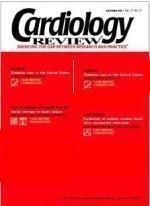Publication
Article
Cardiology Review® Online
Assessing cardiovascular therapies and risks
This month, Cardiology Review features a combined report for the heart failure and arrhythmias section by Dr. Adi Butnaru and associates from Canada. They studied the effect of enalapril on the development of atrial fibrillation in 391 patients with left ventricular dysfunction who were in sinus rhythm at the time of entry into the study. Enalapril treatment reduced the incidence of subsequent atrial fibrillation. In his commentary, Dr. Joseph T. Dell’Orfano considers possible mechanisms of action for this beneficial effect.
In the diabetes section, Dr. Alexander Sevrukov and colleagues examined coronary artery calcium in relation to diabetes status. They used electron-beam computed tomography to evaluate coronary calcification in 30,904 individuals and found higher calcium scores in diabetic subjects. Dr. Richard M. Steingart questions the clinical implications of their results in his commentary.
A special article by Dr. Julia A. Cassetta and colleagues discusses the cardiovascular benefits and adverse effects of common herbal therapies. Herbal products are now commonly used in the United States (nearly always self-prescribed), yet neither physicians nor consumers are fully aware of either their safety or their efficacy. This review sheds valuable light on the subject, as do the comments by other investigators in this field, Drs. Adam T. Stys and Tomasz Stys.
In our final report in the lipid section, Drs. Jonathan R. Emberson and Peter H. Whincup from Great Britain estimated the combined contribution of serum cholesterol, hypertension, and cigarette smoking; studying 6,513 middle-aged men with innovative methodologies, they concluded that at least 80% of cardiovascular risk could be attributed to these three factors. As Dr. Ira J. Goldberg notes in his commentary, this study rebuts the myth that only 50% of CHD risk can be attributed to conventional risk factors and emphasizes the need for better data collection methodology.
The editors of Cardiology Review strive to meet our readers’ needs for concise research reports and independent commentaries that provide a “take-home” clinical message. We want to know what you think about the various aspects of Cardiology Review. Please turn to page 25 to complete the survey, and send us your opinion on how we’re doing.
